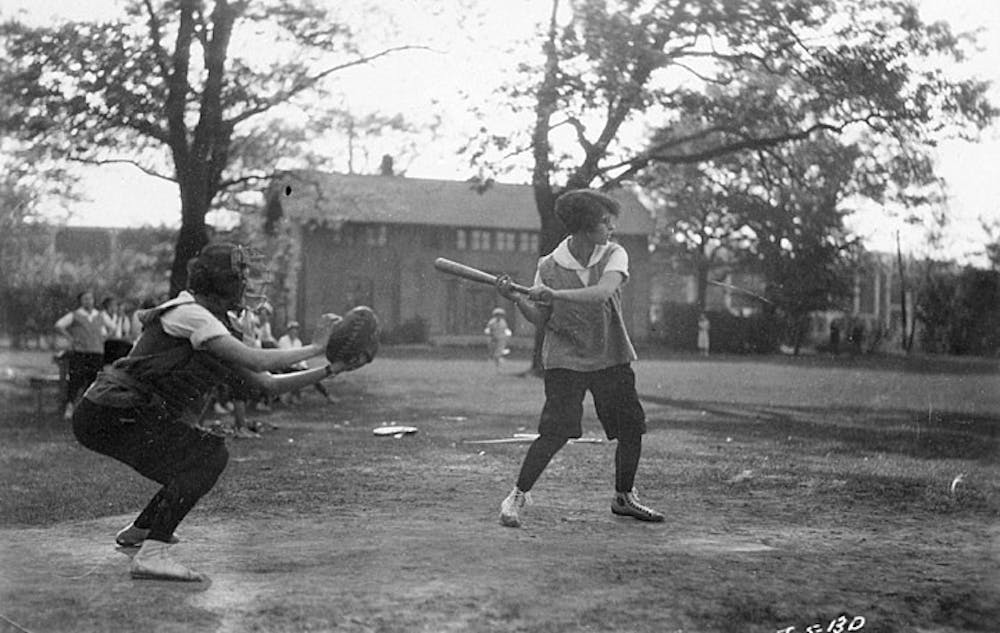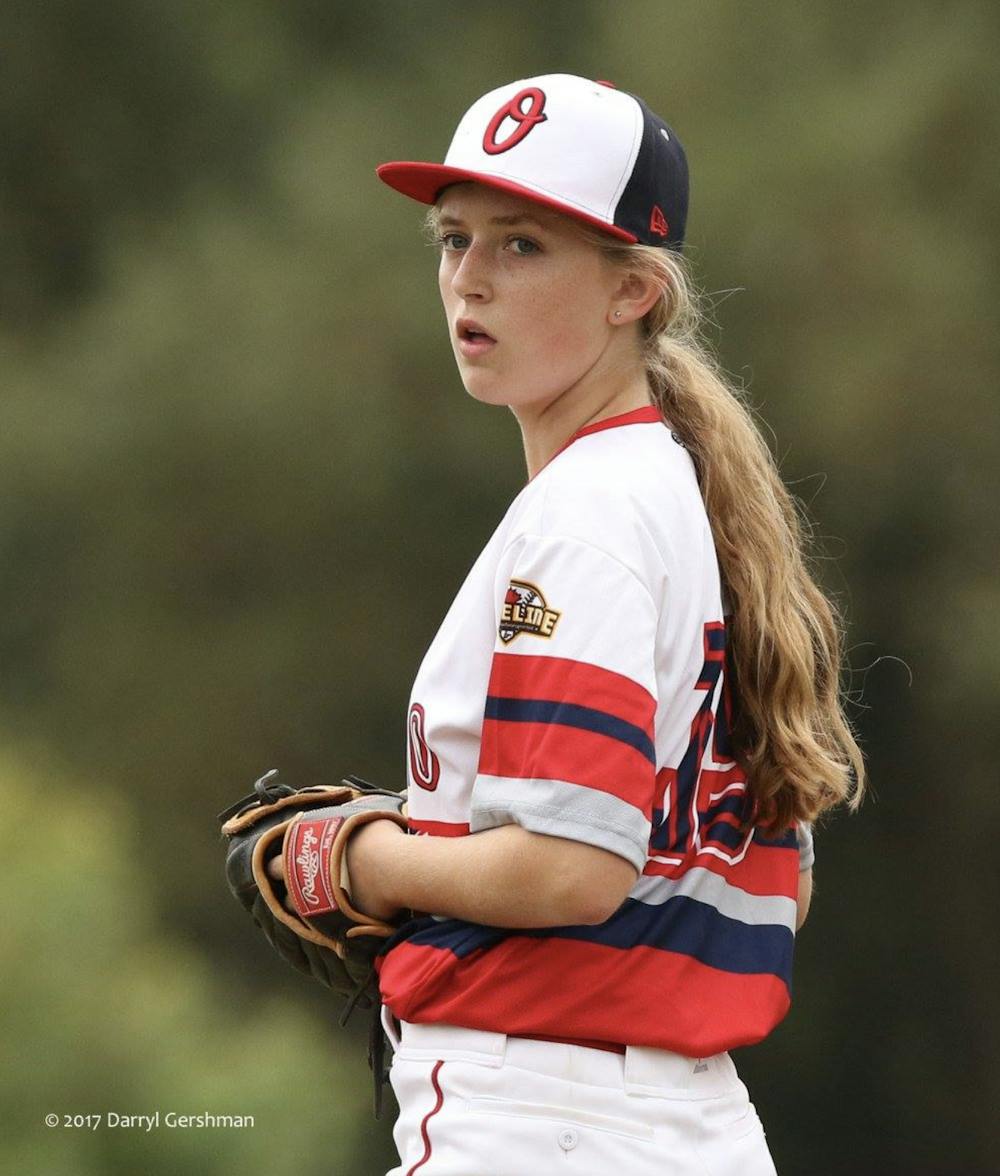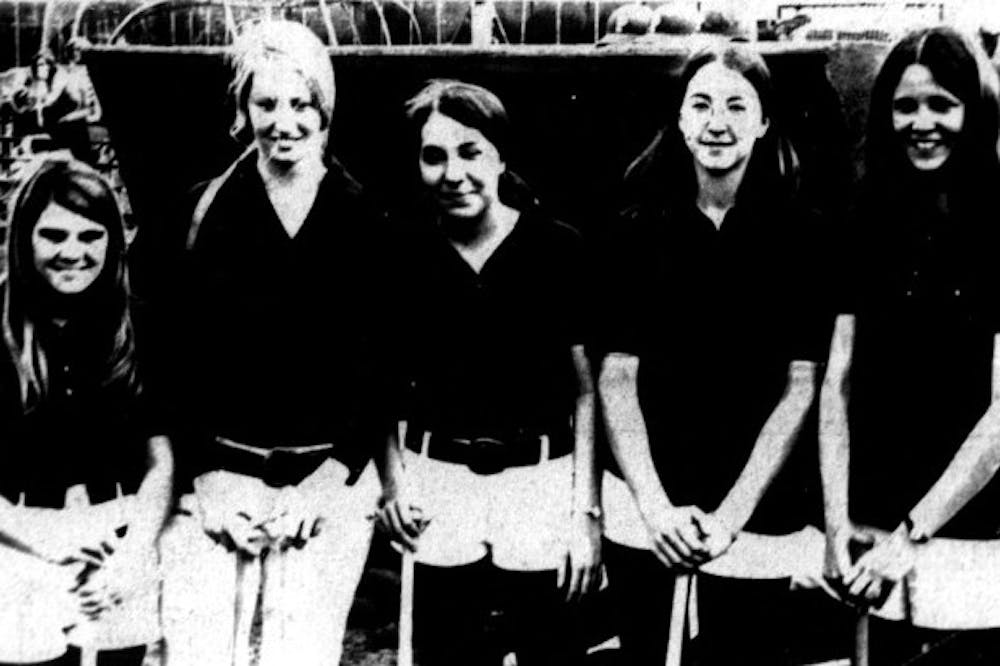
(Photo by uwdigitalcollections | CC BY 2.0)
Whenever someone asks me what types of things I did in high school, they usually correct my answer.
“You mean softball,” they say, as if it’s just another one of my Canadian idiosyncrasies that I brought with me when I moved to the United States for college.
“No,” I always say, a little more forcefully every time. “Baseball.”
I mean, I get it. Girls don’t play baseball — that’s for boys, of course. Girls play softball. It’s not sexist, or anything … it’s just how it is. I know that. But no one’s ever been able to give me a reason why.
I didn’t have anything against softball growing up, but I didn’t know anyone who played it either. Back then, I’d never heard of the College Softball World Series or even seen a fastpitch game.
But you know what names I did know? José Bautista. Russell Martin. Marcus Stroman. Josh Donaldson. My hometown Blue Jays. Those are the guys I grew up watching. Those are the guys I wanted to be.
A lot of girls start off with tee-ball — that’s not out of the ordinary, and by the time they’re 11 or 12 years old, more and more make the swap to the bigger ball and smaller diamond. Even if you’re not thinking about a scholarship down the line, the dwindling number of ponytails just makes you think it might be easier if you switch. It’s what everyone’s doing, isn’t it?
For those who stick around, it’s a tough gig. You’re going to hear things you’ll wish you didn’t, from other players and even adults, who are usually just embarrassed that their son got struck out by a girl.
By the time I was that age, I had discovered what I loved more than anything: being a pitcher. I never threw as fast as my male teammates, but I could throw my slider for a strike with my eyes closed. The concept of pitching underhand was foreign and confusing to me, so there I stayed, just to keep throwing on a mound.
I knew my time was finite in my beloved game. My teammates kept getting taller, stronger, and faster. And no matter how many hours I put in at the gym and in the bullpen, I’d always be left in the dust. It’s a hard fact of life. I avoided it for as long as I could, but soon my junk pitches wouldn’t be fast enough to fool anyone, and the boys would light me up.
But here’s the thing. It doesn’t have to end there.
Even non-basketball fans have heard of the WNBA, and we all watched Team USA bring home the gold at the FIFA Women’s World Cup in 2019. But I bet not many of you knew that there’s a Women’s Baseball World Cup held every two years. That Japan has a professional women’s baseball league and that their women’s national team is ranked No. 1 in the world. Canada is second, by the way, and the United States is fifth.
When I stumbled upon women’s baseball at age 13, my world opened. I started playing for two teams concurrently: I played with my "guys" team during the spring and summer and left them every August to travel across Canada for Nationals with my all-female team.
I even had the opportunity to attend a development camp in Cuba. We played a series against the Cuban women’s team in the famous Estadio Latinoamericano, the second-largest baseball stadium in the world. We kept our bats in the same dugout and warmed up in the same bullpen the Tampa Bay Rays did for their exhibition game against the Cuban men’s national team in 2016. That was the first time I'd ever worn my country’s name across my jersey.

Lochlahn March (Photo by Darryl Gershman)
You may not know it, but we are here. We throw from the same mounds men do. We run the same bases men do. It’s less common, but we still hit home runs out of the same parks men do. Women’s baseball is the sport’s best-kept secret, but not for a lack of trying on our part.
The first time women’s baseball was ever put into a multi-sport competition was the 2015 Pan-Am Games, hosted in my hometown, Toronto. The United States won the gold medal, Canada the silver, and neither country noticed. We were promptly taken right back out of the lineup for the 2019 games in Peru. Of course, men’s baseball remained.
When I was 14, dreaming of my turn to wear the red maple leaf, I thought that Tokyo would be the year. Baseball was coming back to the Olympics — the biggest spotlight shining on my biggest idols and my biggest rivals. The world couldn’t ignore us then.
But even before COVID-19 smashed any hope of a 2020 Olympics at all, we got some bad news. Yeah, baseball was an Olympic sport again. But just for men. For the women, as usual, softball was enough of an equivalent.
They are not the same sport. Not at that level. Not even a little.
They’re two different games. Different fields, different bats, different balls. They have utterly different pitching styles and strategies on the bases and in the field.
I challenge you to think of another pair of sports that’s like these two. Though you’d be hard-pressed to find an NCAA men’s field hockey program, you’re able to see it represented at the Olympics. Women’s wrestling is the same, along with men’s gymnastics and volleyball. The sports that we, here in North America, attribute to only one sex are at least given a neutral international stage. But not softball, unless you count your office job’s team-building slowpitch scrimmage. And not ever baseball.
It wasn’t always this way, which is the strangest part of it. Women’s collegiate baseball can be traced back as far as 1866 when Vassar created its own team. Over the next three years, more than 20 women’s baseball teams were established across the country.
And it wasn’t just college teams, either. Philadelphia even had its own professional women’s baseball team that competed in the Bloomer Girls organization. The Philadelphia Bobbies were composed of women ranging in age from early teens to early 20s and they played throughout the 1920s.
The Bobbies sailed to Japan in 1925, touring the country and competing against Japanese teams for two months. While the trip wasn’t exactly as successful as they intended — the players struggled to raise enough revenue for the return voyage — it reflected the growing globalization of women in the sport.
Former shortstop for the Bobbies, Edith Houghton, became a scout for the Phillies in 1946, the first female scout in the MLB.
Even Penn had its own stake in the history of women’s baseball.
While men played softball in interfraternity tournaments as early as the 1930s, Penn didn’t have standardized women’s softball until 1940. Before that, women played baseball in physical education classes — the only opportunity for women’s athletics on campus in the early 20th century.
The first year an intercollegiate softball league was sponsored at Penn, the Quakers faced a field of opponents including Temple, Swarthmore, and Bryn Mawr. The Bryn Mawr team played half the games in its schedule by the recently-developed softball rules, including underhand pitching and 45-foot base lengths.
But for the other half of the season, Bryn Mawr and its opponents played by the same rules as the MLB.
The other teams, including the Quakers, were eager to complete the transition to full softball schedules, with The Daily Pennsylvanian describing baseball as having “proved too strenuous and overwhelming” for the female athletes.

Penn's batgirls before a game in 1971. (Photo from the Daily Pennsylvanian Archives)
“It is hoped this year that rugged Bryn Mawr girls will agree to play standardized softball rules to protect their weaker sisters,” the DP wrote on Mar. 24, 1941.
After the switch, the only capacity in which women could be found on Penn baseball diamonds was as batgirls, wearing skimpy outfits and giving the spectators a little eye candy in between the men’s at bats.
And then there was the All-American Girls Professional Baseball League, established in 1943 due to many MLB players being overseas fighting in World War II.
While at first the AAGPBL played by hybrid baseball/softball rules, the ball got smaller and the fields got larger over time. By 1954, the women were playing real baseball.
It wasn’t all about the sport though. Women were required to wear dresses and lipstick while running the bases, and they had to attend charm school during spring training to ensure they stayed feminine during games.
It started just as entertainment, perhaps a distraction from the war, but the 900,000 fans in attendance at the height of the AAGPBL’s popularity grew to respect the talent on display.
When financial troubles hit the AAGPBL in the mid-1950s, the league collapsed, and women's baseball largely disappeared from public consciousness.
But it’s starting to come back now. My old teammates and I just about burst with pride when we learned the San Francisco Giants had hired Alyssa Nakken earlier this year. She is the first woman to ever work full-time on an MLB coaching staff.
As usual, former Giants player Aubrey Huff had something to say about that.
“I got in trouble for wearing a thong in my own clubhouse when female reporters were present," he tweeted. "Can’t imagine how it will play out with a female coach running around. This has #metoo & #BelieveAllWomen written all over it.”
To those that share Huff’s view, I’d say crack open a book and look at the history of the sport. Watch a WBWC game or "A League of Their Own" sometime. And leave your misogyny at the door.
After all, if baseball is America’s national pastime, then every American should be able to watch it, report on it, and coach it.
And they sure as hell should be able to play it.
LOCHLAHN MARCH is a College sophomore from Toronto and a Sports Associate for The Daily Pennsylvanian. She can be reached at dpsports@thedp.com.
The Daily Pennsylvanian is an independent, student-run newspaper. Please consider making a donation to support the coverage that shapes the University. Your generosity ensures a future of strong journalism at Penn.
Donate




